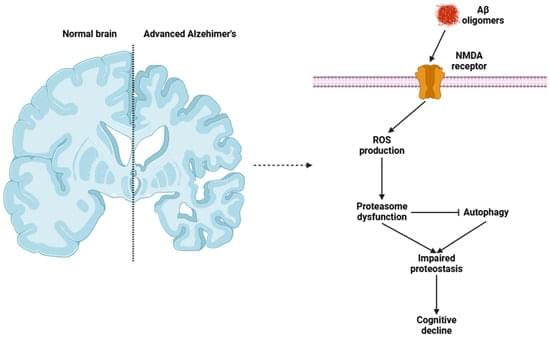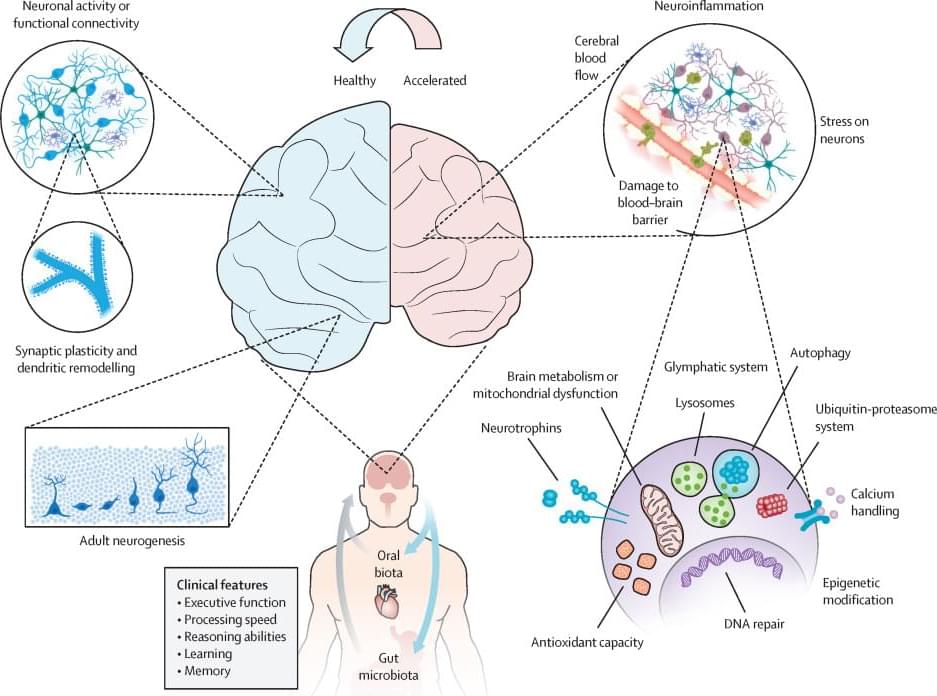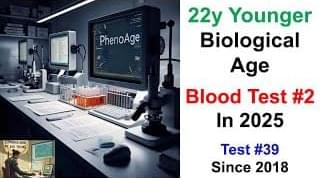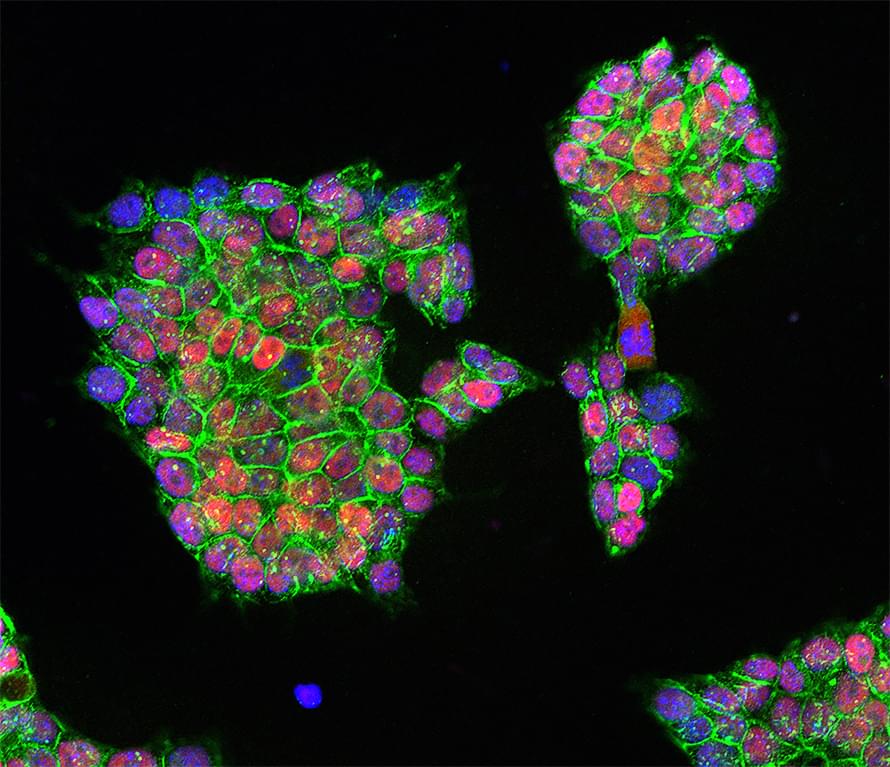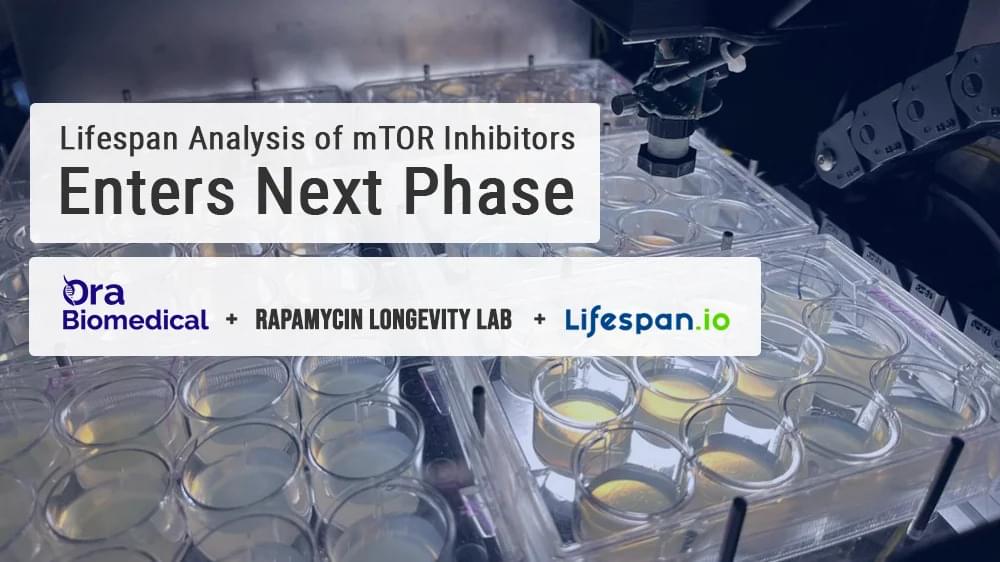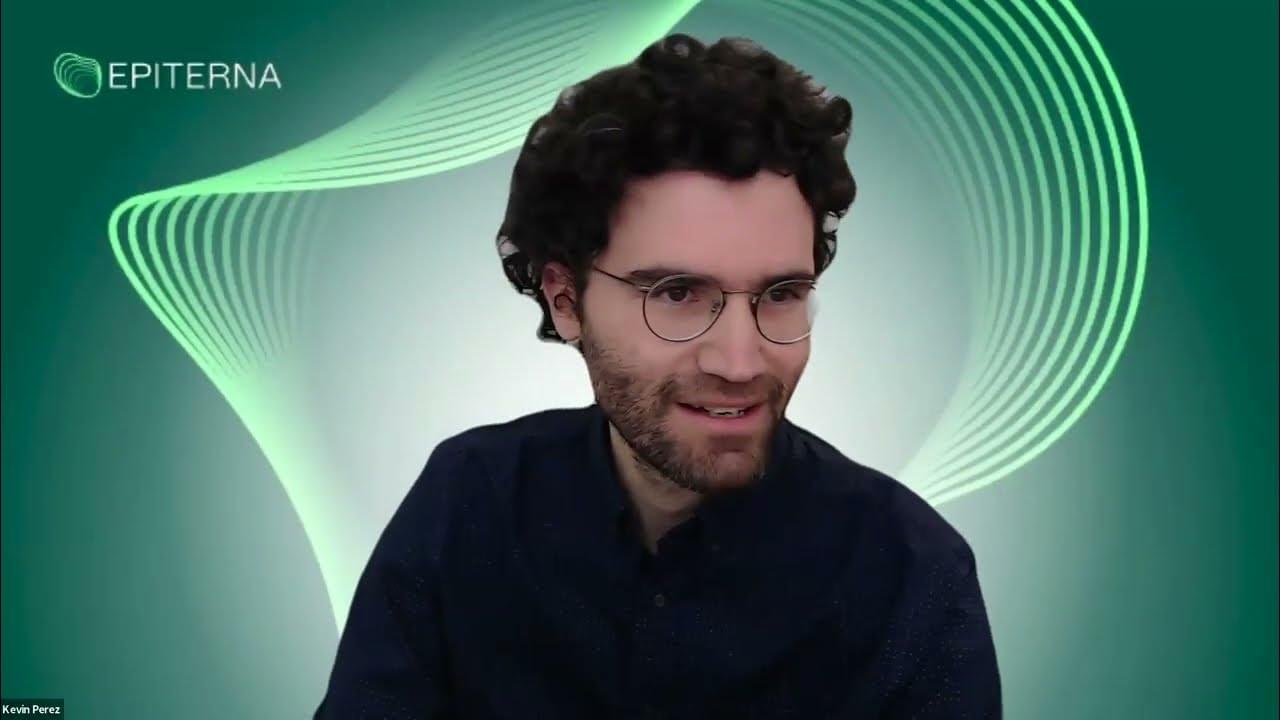Aging is a complex, progressive, and irreversible biological process that entails numerous structural and functional changes in the organism. These changes affect all bodily systems, reducing their ability to respond and adapt to the environment. Chronic inflammation is one of the key factors driving the development of age-related diseases, ultimately causing a substantial decline in the functional abilities of older individuals. This persistent inflammatory state (commonly known as “inflammaging”) is characterized by elevated levels of pro-inflammatory cytokines, an increase in oxidative stress, and a perturbation of immune homeostasis. Several factors, including cellular senescence, contribute to this inflammatory milieu, thereby amplifying conditions such as cardiovascular disease, neurodegeneration, and metabolic disorders.
Category: life extension – Page 3
Ageing is a scientifically fascinating and complex biological occurrence characterised by morphological and functional changes due to accumulated molecular and cellular damage impairing tissue and organ function. Ageing is often accompanied by cognitive decline but is also the biggest known risk factor for Alzheimer’s disease, the most common form of dementia. Emerging evidence suggests that sedentary and unhealthy lifestyles accelerate brain ageing, while regular physical activity, high cardiorespiratory fitness (CRF), or a combination of both, can mitigate cognitive impairment and reduce dementia risk.
Join us on Patreon! https://www.patreon.com/MichaelLustgartenPhD
Discount Links/Affiliates:
Blood testing (where I get the majority of my labs): https://www.ultalabtests.com/partners/michaellustgarten.
At-Home Metabolomics: https://www.iollo.com?ref=michael-lustgarten.
Use Code: CONQUERAGING At Checkout.
Clearly Filtered Water Filter: https://get.aspr.app/SHoPY
Epigenetic, Telomere Testing: https://trudiagnostic.com/?irclickid=U-s3Ii2r7xyIU-LSYLyQdQ6…M0&irgwc=1
Use Code: CONQUERAGING
NAD+ Quantification: https://www.jinfiniti.com/intracellular-nad-test/
Induced pluripotent stem cells are paving the way for personalized treatments to diabetes, vision loss and more. However, scientists still face hurdles such as strict regulations, scalability, cell longevity and immune rejection.
Sacred waters with remarkable healing powers. Ancient mystics who lived for hundreds of years. A scientific breakthrough may provide the answers to eternal life. Throughout history many have searched for the secret to everlasting life, but so far, it’s eluded them. But is it possible to cheat death and live forever? See more in Season 3, Episode 5, \.
There are two ways of dealing with this public health problem. One is to devise a comprehensive strategy to combat social inequality that will prevent disease before it happens. Another way is to develop a pill that treats the wear and tear of stress and toxins on the body.
Believe it or not, there are experiments on such pills underway.
Candidates include dasatinib, quercetin, metformin, rapamycin and fisetin among many others. These drugs may slow or even reverse aging in anyone, but they hold the greatest promise for improving America’s health because they disproportionately help the disadvantaged. This population bears the greatest burden of disease by far, so even small health gains in this population can go a long way.
Americans would much prefer a pill or a vaccine over a contentious policy battle.
Coronary Artery Disease (CAD) is the most common cardiovascular disease worldwide, threatening human health, quality of life and longevity. Aging is a dominant risk factor for CAD. This study aims to investigate the potential mechanisms of aging-related genes and CAD, and to make molecular drug predictions that will contribute to the diagnosis and treatment.
We downloaded the gene expression profile of circulating leukocytes in CAD patients (GSE12288) from Gene Expression Omnibus database, obtained differentially expressed aging genes through “limma” package and GenaCards database, and tested their biological functions. Further screening of aging related characteristic genes (ARCGs) using least absolute shrinkage and selection operator and random forest, generating nomogram charts and ROC curves for evaluating diagnostic efficacy. Immune cells were estimated by ssGSEA, and then combine ARCGs with immune cells and clinical indicators based on Pearson correlation analysis. Unsupervised cluster analysis was used to construct molecular clusters based on ARCGs and to assess functional characteristics between clusters. The DSigDB database was employed to explore the potential targeted drugs of ARCGs, and the molecular docking was carried out through Autodock Vina.
Ora Biomedical, in partnership with Rapamycin Longevity Lab, announces the successful funding of the first subproject under its ambitious initiative to conduct a rapid lifespan analysis of 601 mTOR inhibitors in roundworms.
With $50,000 secured, Ora Biomedical will now commence the next phase of the first subproject. This will be a high-throughput screening of 301 mTOR inhibitors using its cutting-edge WormBot-AI technology. This milestone marks an important step toward identifying next-generation compounds that could be more effective than rapamycin, which is currently seen as the golden standard because of its good longevity effects in multiple species.
Mitchell Lee, CEO of Ora Biomedical, emphasized the importance of this research by stating: “The potential of targeting aging to broadly improve healthy lifespan is clear from decades of studies with compounds like rapamycin. However, even for well-validated molecular targets like mTOR, we still don’t know the best interventions. We at Ora Biomedical are proud to partner with Rapamycin Longevity Lab to advance our understanding around targeting mTOR and related kinases for maximizing healthy lifespan. None of this work is possible without support from visionary donors and organizations like the Lifespan Research Institute, the nonprofit behind Lifespan.io, with whom we have partnered to create pathways for donations to advance longevity science. To all those involved, thank you again, and we are excited to get to work!”
Anjie Zhen & team show rapamycin reduces HIV-mediated chronic inflammation and T cell exhaustion, delaying viral rebound and reducing viral reservoir in mice.
2UCLA AIDS Institute and the Eli and Edythe Broad Center of Regenerative Medicine and Stem Cell Research, David Geffen School of Medicine at UCLA, Los Angeles, California, USA.
Join us this episode as we explore how a cutting-edge, high-throughput screening platform can identify lifespan-extending compounds in diverse model organisms, with Dr Kevin Perez, co-founder of Epiterna and Junior Group Leader at Charité Universitätsmedizin Berlin, and host Prof Brian Kennedy, Director of the Centre for Healthy Longevity at #NUSMedicine.
Register for upcoming #HealthyLongevity #webinar sessions at https://nus-sg.zoom.us/webinar/register/2117367621680/WN_g5RF29EWQf65KDFfpVLjFA
Disclaimer: The opinions and advice expressed in this webinar are those of the speakers and do not represent the views and opinions of the organizers and National University of Singapore or any of its subsidiaries or affiliates. The information provided in this webinar is for general information purposes only as part of a general discussion on public health. The information is not intended to be a substitute for professional medical advice, diagnoses or treatment; and cannot be relied on in place of consultation with your licensed healthcare provider. All Rights Reserved.
All of the proceedings of this webinar, including the presentation of scientific papers, are intended for limited publication only, and all property rights in the material presented, including common-law copyright, are expressly reserved to the speaker or NUS. No statement or presentation made is to be regarded as dedicated to the public domain.
Any sound reproduction, transcript or other use of the material presented at this course without the permission of the speaker or NUS is prohibited to the full extent of common-law copyright in such material.
